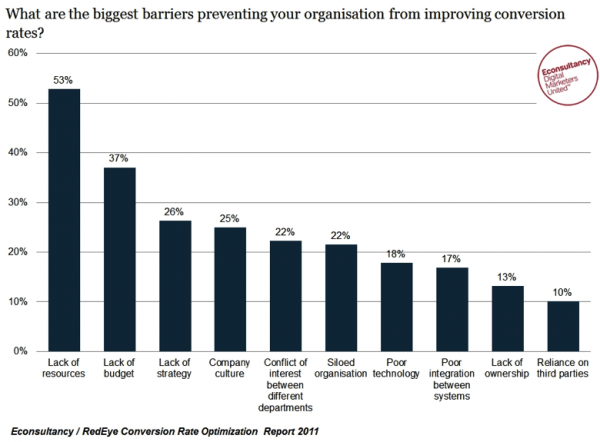Shocking! New report shows surprisingly few companies using CRO techniques
Increasing conversion rate is a common goal for all site owners whether they’re running transactional sites or not. That’s why we review the tools available for CRO and have regular posts on techniques to improve conversion from Paul Rouke and others.
You would think that working to increase conversion is obvious; everyone would be working on it in the same way they will work on search, email or social media marketing. It seems this isn’t the case according to a new Econsultancy-Redeye Conversion Optimization report that shows where the smartest marketers are investing. There’s also a companion report from Redeye on developing a structured approach to CRO which I recommend if you’re working on boosting conversion.
In this post I’ll summarise the main implications as I see them - thanks to Redeye and Econsultancy for sharing this part of their research!
1 Techniques for increasing conversion rates
This chart is useful since it shows some of the core activities you can work on to improve conversion. I think it’s shocking that none of these activities are used by the majority of marketers!
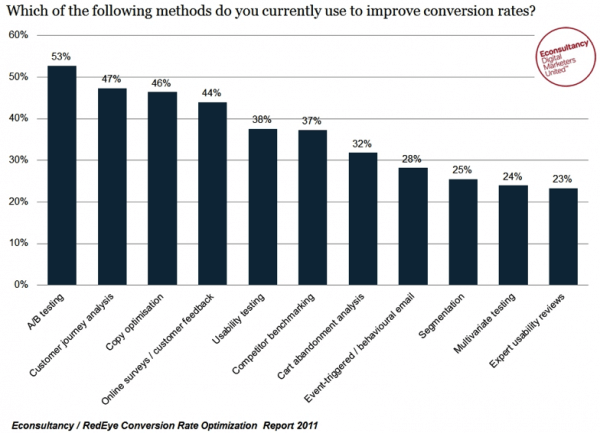
Looking at the techniques used, I’m surprised in a sense, that AB testing is most common since this needs tools, resource and testing projects to be setup. Yet customer journey analysis and segmentation rate lower but are available to all companies using Google Analytics - if time and money can be made to make them happen - again shocking! Similarly, the use of surveys and competitor benchmarking are surprisingly low.
2 Most valuable methods of improving conversion
The report also asks for the views of respondents on what works. It’s similar to the previous chart but shows the value of usability testing and customer journey analysis. Previously there had been barriers to completing these in terms of cost, but there are now some great low-cost usability/journey assessment tools available to businesses of any size.
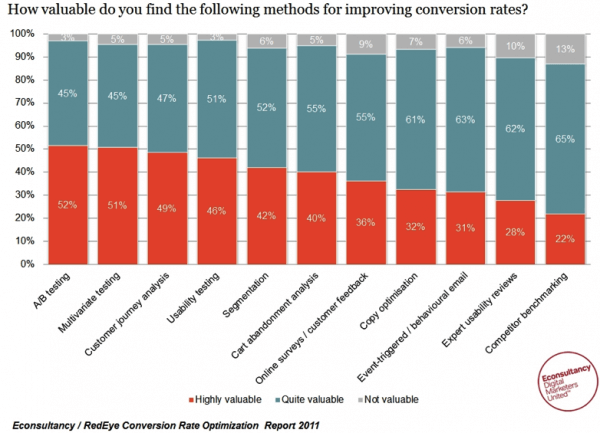
3 Other optimisation practices
Econsultancy also asked marketers how they evaluate their own capabilities. It seems many feel they need to up their game here. This chart also shows other activities which form part of CRO such as keyword and landing page mapping - always a worthwhile activity I’ve found.
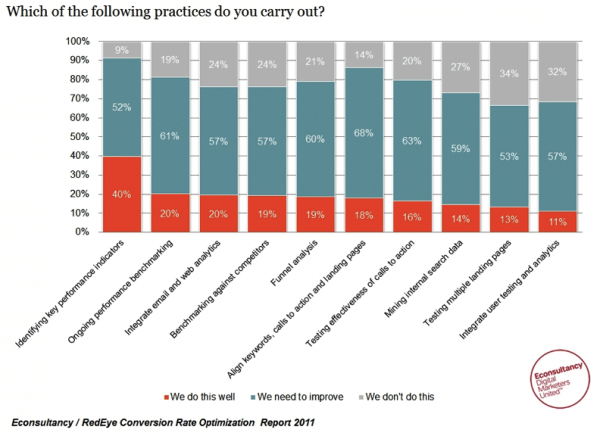
4 Responsibilities for CRO
The final charts that stood out for me hint at why some of these activities aren’t used so often. Well over half of respondents have someone responsible for CRO, which is encouraging. It’s not clear whether this is dedicated resource or why, if there is someone responsible, the CRO activities we mentioned above aren’t more common.
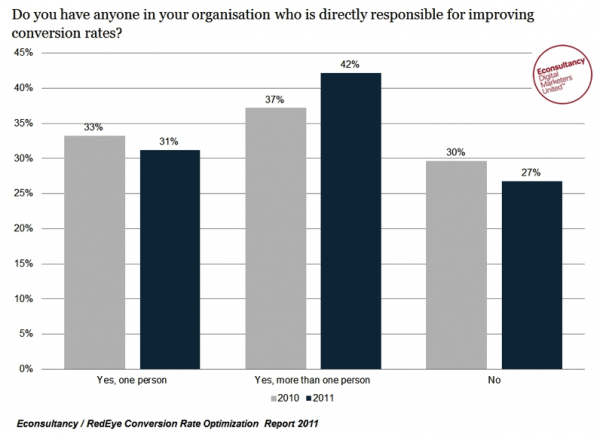
5 Control over CRO
It’s not in our control seems to be message for a substantial number here with relatively few having CRO nailed. I suspect this is due to the number of different stakeholders who will control what forms a site.
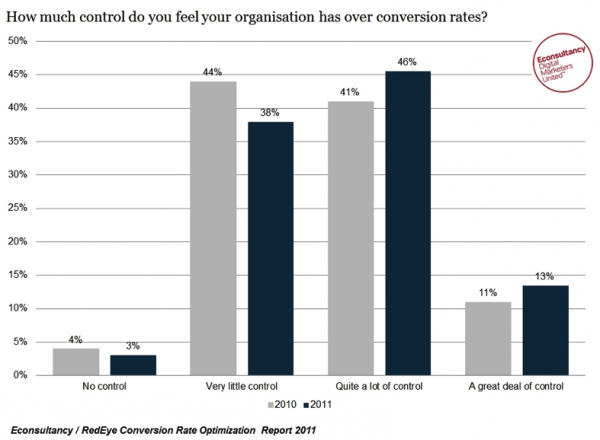
6 The barriers
Perhaps no surprises here - resource and budget are the main barriers. These suggest lack of buy-in and lack of a digital strategy to prioritise activities for me. Strange since the beauty of CRO is you can create a business case based on website conversion models, although you do need some tests or compilations of conversion rates to calibrate these.
